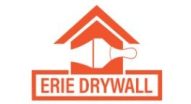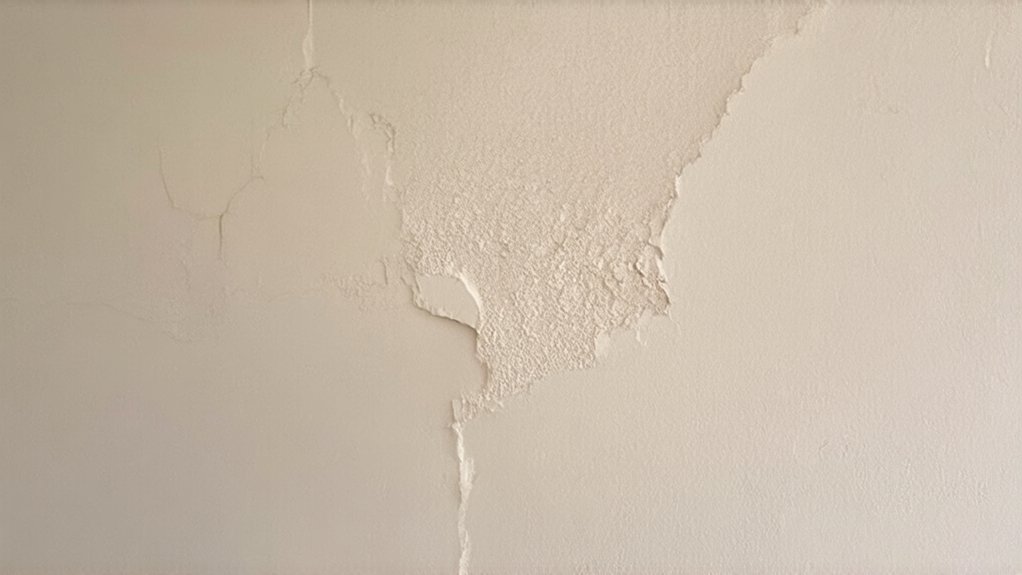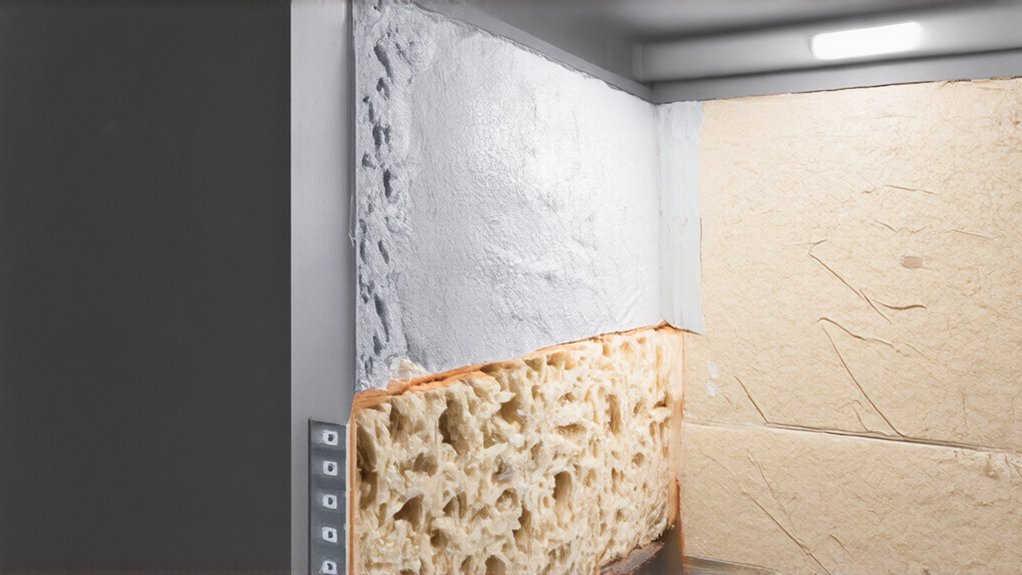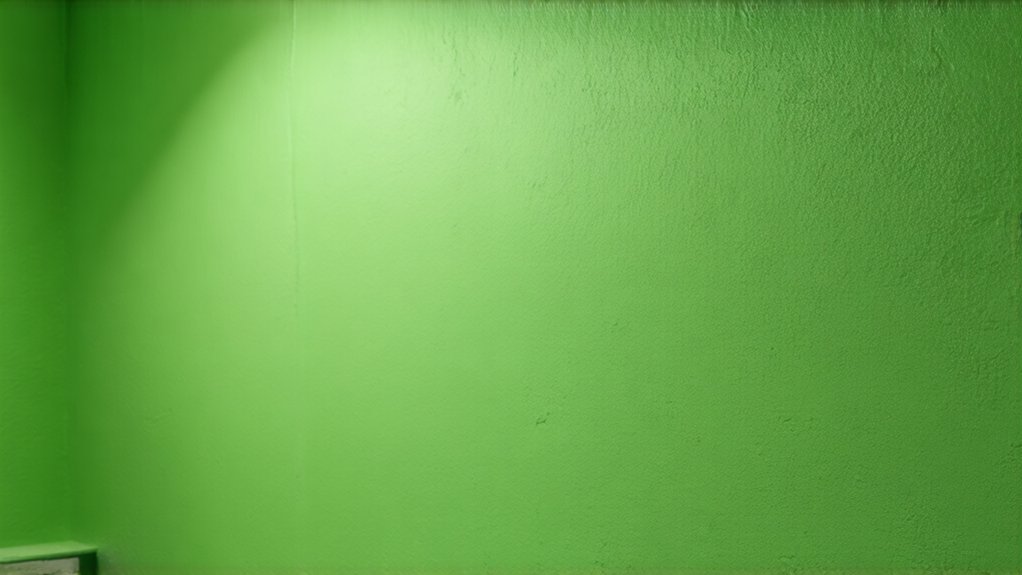Drywall bulging often signals hidden moisture issues or structural problems in your home. You'll typically see this caused by high humidity, water leaks, or improper installation. Minor bulges can be repaired with careful spackle techniques, but extensive damage requires professional assessment. Check for water stains, soft spots, and potential leak sources around windows and pipes. Don't ignore these warning signs—the deeper you investigate, the more understanding you'll gain about safeguarding your home's integrity.
Common Causes of Drywall Bulging
Whether you've noticed a slight bump or a significant protrusion, drywall bulging can stem from various underlying issues that homeowners should understand.
High humidity causes moisture absorption, which can make drywall expand and warp. Improper installation techniques, like inadequate fastening or incorrect spacing between panels, frequently contribute to this problem.
Structural shifts, water leaks, and temperature fluctuations can also trigger bulging. When drywall isn't installed correctly or exposed to consistent moisture, it loses its structural integrity, creating unsightly and potentially dangerous bulges that compromise your wall's appearance and stability.
Professional drywall installation techniques can help prevent these issues by ensuring proper mounting, seam sealing, and moisture resistance from the initial construction phase.
Identifying the Source of Wall Damage
Most homeowners will encounter wall damage at some point, and pinpointing its root cause is crucial for effective repair. You'll want to investigate wall cavity issues carefully, looking for signs of moisture intrusion sources like water stains, mold, or soft spots.
Check around windows, pipes, and rooflines for potential leaks that might compromise your wall's structure. Pay attention to discoloration, warping, or unusual texture changes, as these can indicate underlying problems. By systematically examining your walls, you'll identify the damage's origin and take the first step toward a successful repair strategy. Professional drywall repair services in Erie, PA can provide expert assessment and targeted solutions for complex wall damage issues.
DIY Repair Techniques for Minor Bulges
After locating the source of wall damage, you can now focus on repairing those minor bulges that mar your drywall's smooth surface. Small imperfections can be fixed with tight seam repair techniques that restore your wall's appearance. You'll need a putty knife, spackle, sandpaper, and patience.
Start by gently pressing the bulge to see if it settles back into place. If it doesn't, carefully cut a small X over the bulge with a utility knife. Apply spackle using skim coating techniques, feathering the edges to blend seamlessly with the surrounding wall.
When to Call a Professional
While DIY repairs can tackle minor wall imperfections, some drywall bulges signal more serious structural issues that require professional intervention.
When you're facing extensive damage, moisture problems, or suspect underlying structural concerns, hiring licensed contractors becomes your best strategy. Professional assessment helps you understand the root cause and prevent future complications. They'll evaluate repair cost-effectiveness, potentially saving you money in the long run.
Professionals have specialized tools and capabilities to diagnose complex issues that might escape an untrained eye. Don't risk further damage by attempting repairs beyond your skill level—trust experienced professionals to restore your wall's integrity.
Preventing Future Drywall Damage
Safeguard your walls by implementing proactive maintenance strategies that prevent future drywall damage. Regular moisture control strategies can greatly diminish potential issues.
Monitor areas prone to humidity, such as bathrooms and basements, and use dehumidifiers to sustain ideal moisture levels. Undertake periodic structural integrity assessments to detect early signs of potential damage.
Check for water leaks, inspect plumbing connections, and guarantee proper ventilation in high-moisture spaces. Address small cracks or bulges immediately to avoid extensive repairs. By staying vigilant and taking preventive measures, you'll protect your walls and preserve your home's structural health.
Frequently Asked Questions
Can Drywall Bulging Indicate a More Serious Structural Problem?
You'll want to take drywall bulging seriously—it could signal moisture intrusion or underlying foundation issues that might compromise your home's integrity. Don't ignore these warning signs; they're your property's way of asking for help.
How Quickly Can a Small Bulge Become a Major Issue?
You'll want to act fast, as a small bulge can rapidly expand within weeks due to moisture absorption. The rate of expansion depends on underlying conditions, potentially altering a minor issue into a significant structural concern if left unchecked.
Will Homeowners Insurance Cover Drywall Damage and Related Repairs?
You'll need to carefully review your homeowner policy limits and gather thorough claims process documentation. Coverage varies, so contact your insurance agent to understand the specifics of your drywall damage and potential repair reimbursement.
Are Some Rooms More Prone to Drywall Bulging Than Others?
You'll find bathrooms, kitchens, and basements are most susceptible to drywall bulging due to higher moisture content. These rooms' building materials are frequently exposed to humidity, steam, and potential water leaks that increase structural vulnerability.
Can Temperature and Humidity Affect Drywall's Likelihood of Bulging?
You'll notice that moisture levels and temperature fluctuations directly impact your drywall's stability. Rooms with high humidity or extreme climate changes are more likely to experience bulging, making your home's environment a critical factor in wall condition.



